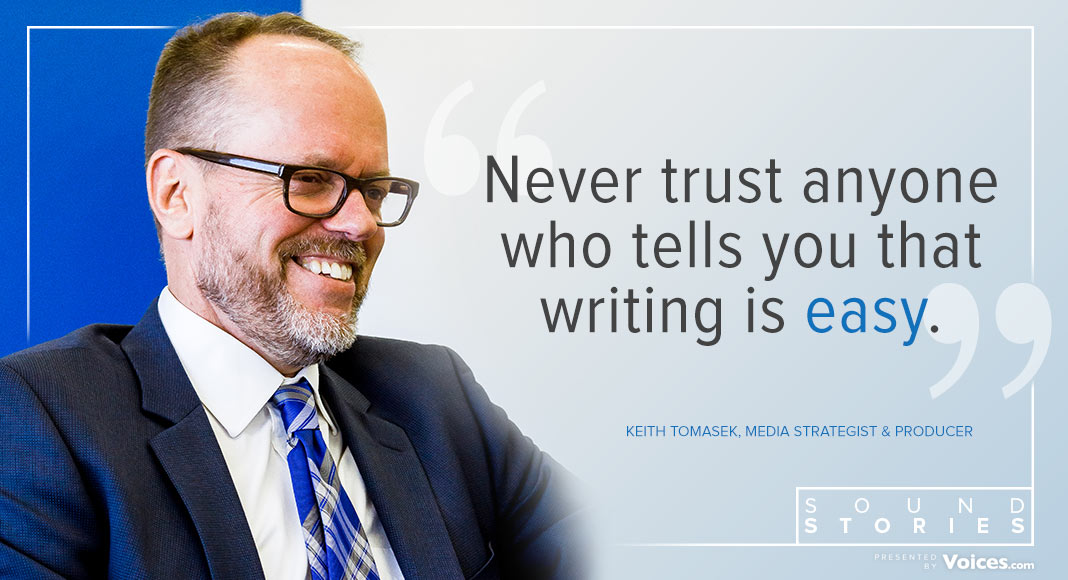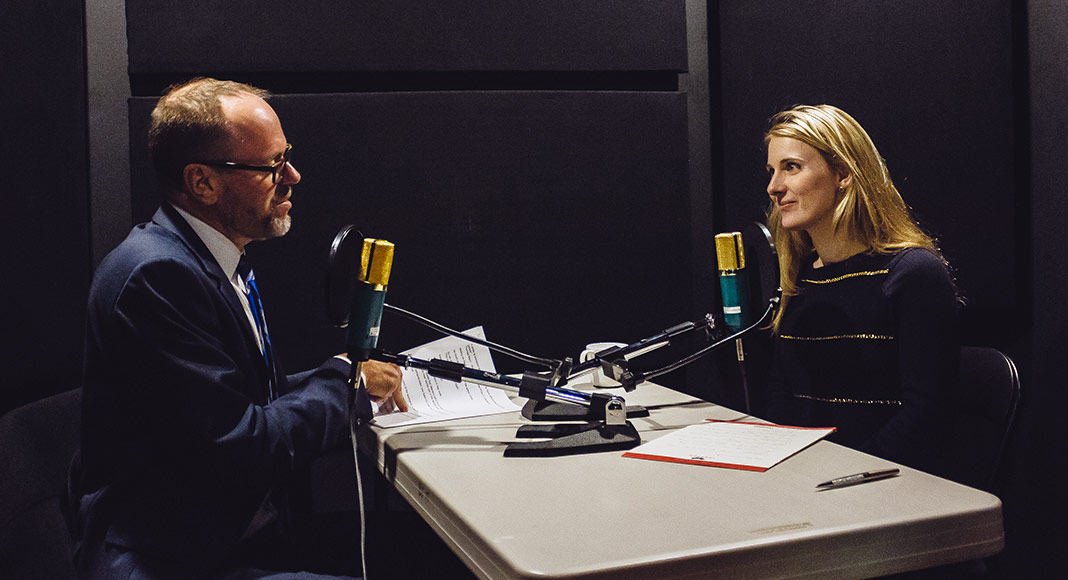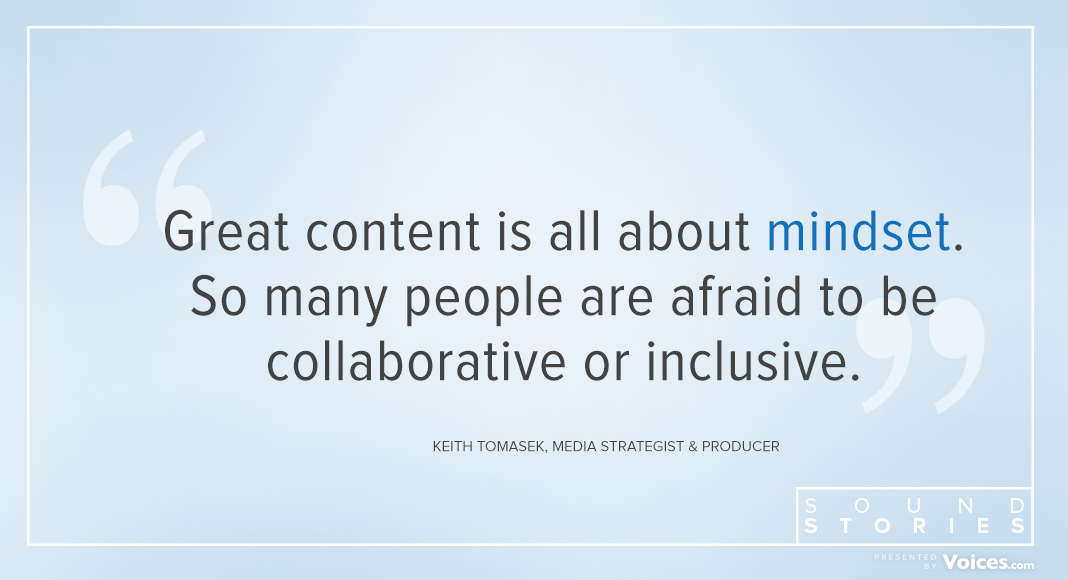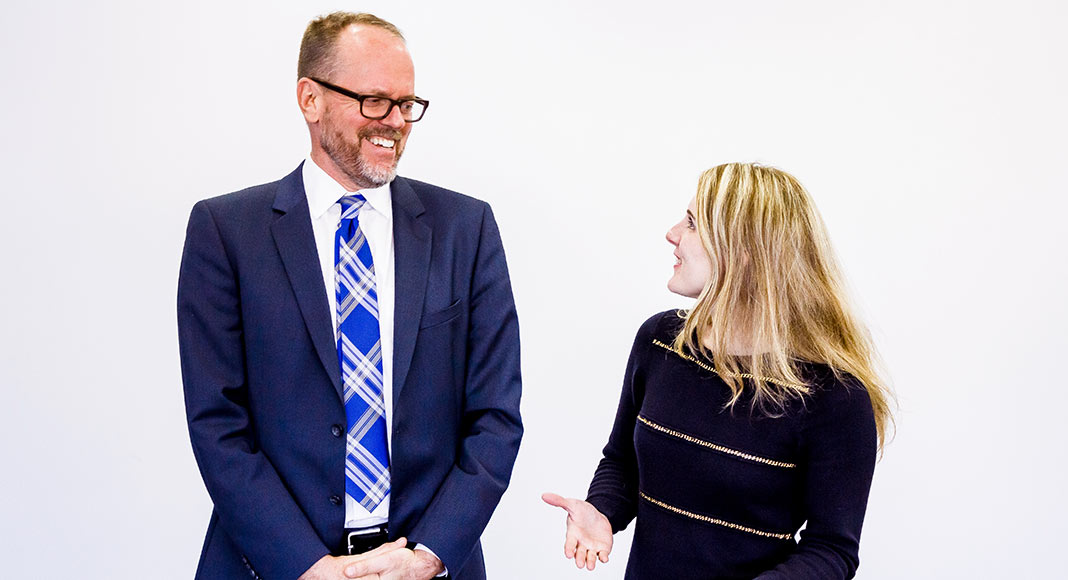The struggle is real for content creators who want to craft stories that add value to their audiences’ lives
If you’re a content creator, you already know that ‘authenticity sells.’
However, you also know that when it comes to publishing truly compelling stories, it’s easier said than done.
Even at a time when storytelling with transparency has gained recognition for its ability to carry a brand message farther than any orchestrated sales push – many businesses still struggle to connect with their audience.

A Digital Strategy Consultant Shares How to Overcome Storytelling Roadblocks
As a Digital Strategy Consultant, Keith Tomasek has used his diverse experience in communications, advertising, production and even acting and improv, to help many brands overcome communication roadblocks.
Here are Keith’s three secrets to crafting authentic brand stories.
1. Shift Your Company’s Mindset Away from Fear
When storytelling is put through a corporate lens, all too often, blog posts become thinly veiled sales copy, social channels flood with promotions, emails boast about company achievements – and the brand ends up missing the opportunity to deepen its relationship with fans.
According to Keith, many corporations are actually holding themselves back out of fear that they’re not offering value if they’re not pushing an offer.
“It’s not the content that’s changed it’s the brand that needs to change the perception of what they’re publishing,” says Keith. “Those who are successful at content marketing are the ones who embrace the fact that if they create good content that isn’t necessarily persuasive but rather informative, entertaining and problem solving in people’s lives, they’re doing their brand a service.”
“Creating great content is all about mindset,” explains Keith. “So many people are afraid to be collaborative, all encompassing or inclusive [with storytelling].”

2. Give Your Efforts Some Time Before Measuring the ROI
Many companies get wrapped up in discovering the ROI of their efforts – and understandably so. The parameters for measuring content marketing have never been more diverse or the technology capabilities so great for tracking user behavior. But sometimes the results don’t materialize fast enough and companies pull the plug before their content has a chance.
“Building an audience takes time because the audience has to come to know you, like you and trust you,” explains Keith. “When I was acting I would street perform. Through that format, I’d be giving away content for 30 minutes, but I was so confident in the relationship building aspect. I trusted that the audience was smart enough to know that by stopping and standing there, they would also expect that at some point, I’d be asking for something. That’s the dynamic of the relationship. In the terms of a business, your ‘bystanders’ may give you their email address, purchase a product or even just begin to consider you – but it takes time to build an audience.”
3. Be Consistent, Organic and Social in Your Online Marketing Communications
“If you create consistent content and publish it in a time and place where your audience is ready to receive it or will bump into it, it could be a matter of months before you start to see the traffic you were hoping for,” says Keith.
“When it comes to social media, the key thing is to realize that whatever platform it is, it’s a gathering place not a commercial marketplace. If you’re going to ‘play’ there, ask ‘how does my brand fit into this social space without being invasive?’ Humanize your brand. Eighty percent of what you publish on social media shouldn’t be driving back to your site – only twenty percent should.”
According to Keith, although there are advantages to ‘paying to play,’ having an organic following is better.
“It’s easy to throw money away on social media,” he says, “But the payoff is better if you grow organically because it means that people are engaging with and sharing your content because they like it.”
Want More Storytelling Insights?
Tune in to the Sound Stories Podcast to learn more from Keith and other industry experts, as they provide insights and tips for creative professionals.


Leave a Reply